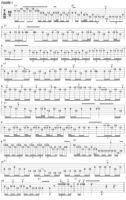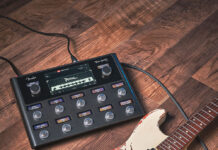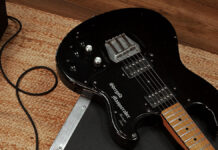
Adding the Major Third to Blues Licks in Ninth Position
In this third installment of our exploration of utilizing the major third of E, G#, as an additional tone within licks based on the E minor pentatonic scale (E G A B D) and E blues scale (E G A Bb B D), we will focus on ninth position. (By the way, you’ll find parts 1 and 2 under RELATED ARTICLES below/left.
The reason the major third is such a welcome sound is that, when playing over the tonic, or “one” chord in a blues progression in E, E7, it represents an important, defining chord tone.
Of the four notes that make up an E7 chord—E, G#, B and D—only E, B and D are present in the aforementioned scales, so the addition of the G# notes strengthens the connection between the melody and the underlying E7 chord. If we add G# to the E blues scale, we get a hybrid scale that includes a chromatic row between the minor third, G, and the fifth, B; the notes of this hybrid scale are: E G G# A Bb B D, spelled, intervallically: 1 b3 3 4 b5 5 b7.
As I demonstrated in the previous two columns, the placement of the major third, G#, in a melodic line should ideally come after the minor third, G, as a means to highlight the presence of the chord tone. This is the case whether the line is ascending or descending.
Remember that you can incorporate the sound of the major third by either fretting the note normally or bending the minor third up a half step. String bends always sound genre-appropriate and expressive when playing blues or blues-rock, and the technique serves to lend a vocal quality to an improvised line.
FIGURE 1 is a 12-bar solo played over a slow blues in E, with all licks restricted to ninth position. As I’ve pointed out in previous columns, restricting oneself to a specific scale position across an entire 12-bar solo is not the way most soloists will play, but the benefit from this exercise is that it forces you to think more melodically while also breaking the habit of allowing muscle memory to make melodic decisions for you.
The benefits are two-fold: the player should simply listen to the melodies as they take form in the given area of the fretboard, while the common danger of unconsciously playing tired licks and patterns is broken. Throughout the majority of the solo, I use the E root note, third string, ninth fret, as an “anchor,” or “home base,” for the melodic phrases. It’s both fun and challenging to designate this note as a target within the scope of melodic improvisation.
Source: www.guitarworld.com











